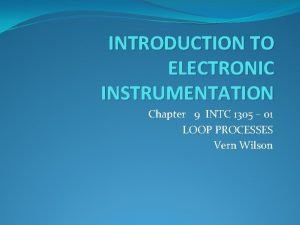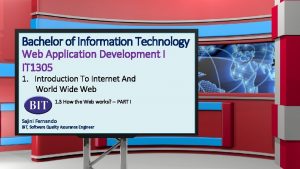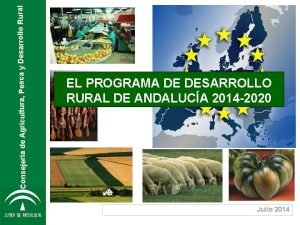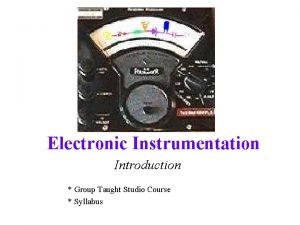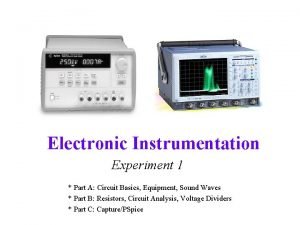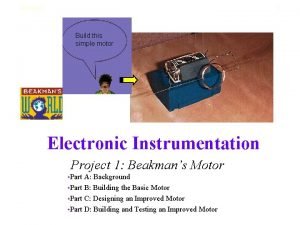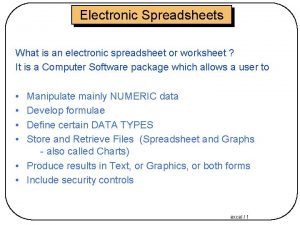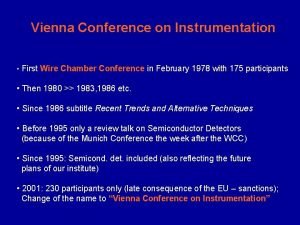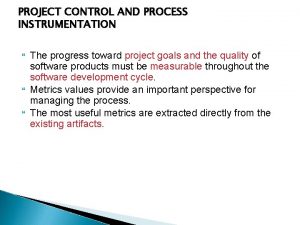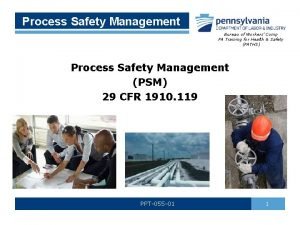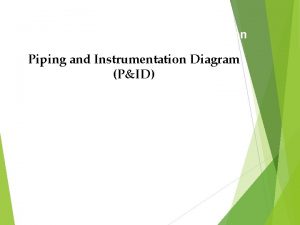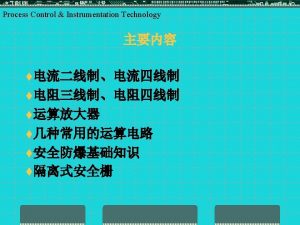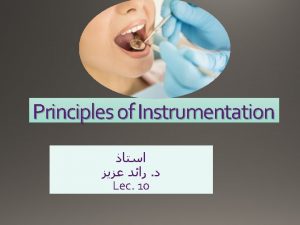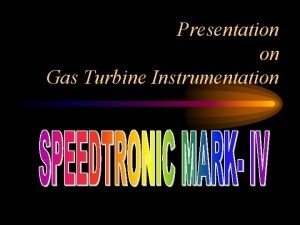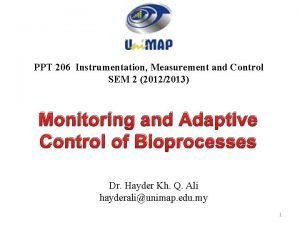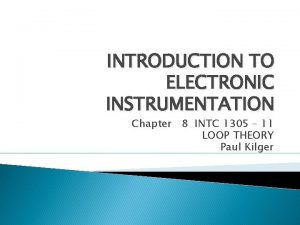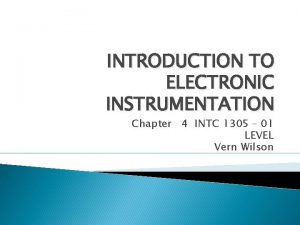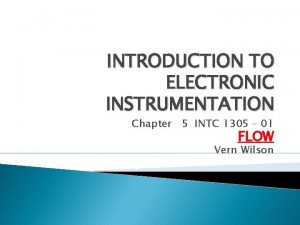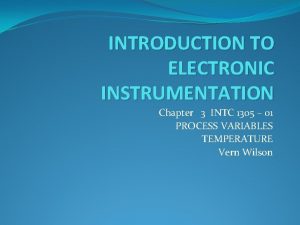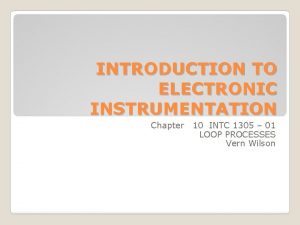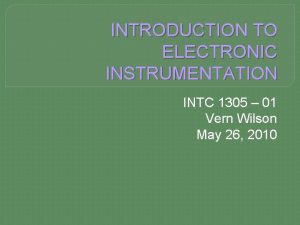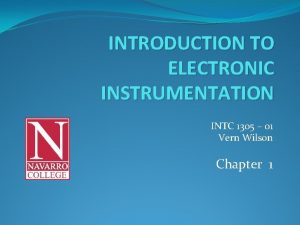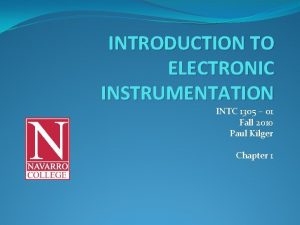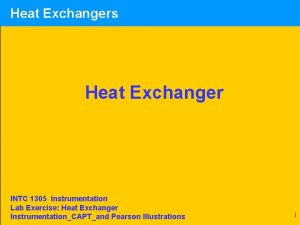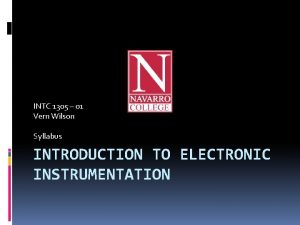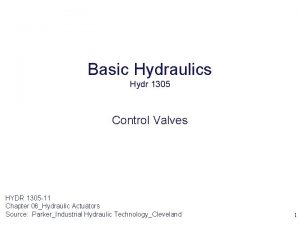INTRODUCTION TO ELECTRONIC INSTRUMENTATION Chapter 11 INTC 1305
















- Slides: 16

INTRODUCTION TO ELECTRONIC INSTRUMENTATION Chapter 11 INTC 1305 – 01 CONTROL VALVES AND REGULATORS Vern Wilson

�Defining controller terms �Bumpless transfer �Switching from Auto to Manual �Operating various loops �Describing loops from drawings �Various final control elements PREVIEW of CHAPTER 10

�Valve description �Fail open / close �Purpose of actuators �Gauge functions – 3 pressure gauges �Troubleshooting �Reverse the operating situation �Globe, three way and butterfly valves �Intro to P&ID’s and PFD PREVIEW OF CHAPTER 11

�Final control element is the last device in the loop �Accepts the manipulated PV info �Control valve is most common �There a variety of actuators �Instrument air is commonly used – regulated, clean and dry INTRODUCTION

SP - Comparator Input Signal Conditioner Determine Amount Determine Direction Send Signal Final Control Element Transmitter Process LOOP �

�Control valves provide a differential pressure across valve �Regulate the flow of fluids �May open to add more or close to add less �Control valves have actuators �The actuator changes the controller signal into a linear or rotary motion �The motion opens or closes the valve The Control Valve

Fisher Pg 222

�Diaphragm �Spring �Transducer �Bonnet �Body �Plug �Seat �Packing �Controller IDENTIFY ALL PARTS

�If power or air failure – move to a safe position �Fail open, closed or last �Valves without springs fail in last position �Solenoids and air tanks can be used in emergency to return valve to last point �Indicated on P&ID by FC FAILURE CONDITON

CONTROLLER

�Responds to an applied instrument signal �Consider safety in design �Either DIRECT acting or REVERSE acting �Direct – pressure extends the stem – means stem goes down to close �Reverse – pressure retracts stem – stem pulled up to close �Look at ID plate ACTUATORS

�Two main types: ◦ Spring and Diaphragm ◦ Piston Type �Most Common: ◦ Spring and Diaphragm ◦ Single Diaphragm ◦ Diaphragm Plate ◦ Stem ◦ Low cost ◦ High mechanical advantage ◦ Provides a mechanical fail safe PNEUMATIC DRIVEN

�Single or double PISTON TYPE

�Makes output valve position match the controller POSITIONERS

�Globe �Three way �Butterfly �Ball VALVES

�Self actuating device to control pressures REGULATORS
 1305 chapter 9
1305 chapter 9 Yustine 1305
Yustine 1305 Reglamento 1305/13
Reglamento 1305/13 Electronic instrumentation rpi
Electronic instrumentation rpi Rpi electronic instrumentation
Rpi electronic instrumentation Stepper motor full step sequence
Stepper motor full step sequence Scrip exchange
Scrip exchange Electronic news gathering and electronic field production
Electronic news gathering and electronic field production Explain the different types of electronic spreadsheet
Explain the different types of electronic spreadsheet Vienna conference on instrumentation
Vienna conference on instrumentation Process instrumentation in software project management
Process instrumentation in software project management Health concerns
Health concerns Flow meter symbol p&id
Flow meter symbol p&id Process control instrumentation technology
Process control instrumentation technology Palm and thumb grasp
Palm and thumb grasp Gas turbine controls
Gas turbine controls Measurement and instrumentation ppt
Measurement and instrumentation ppt
